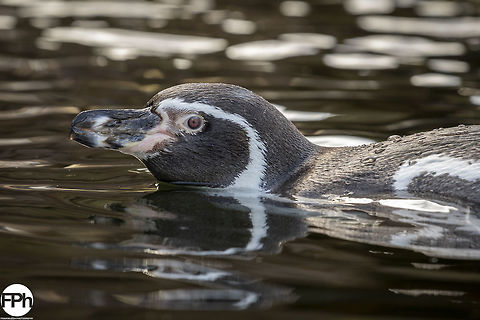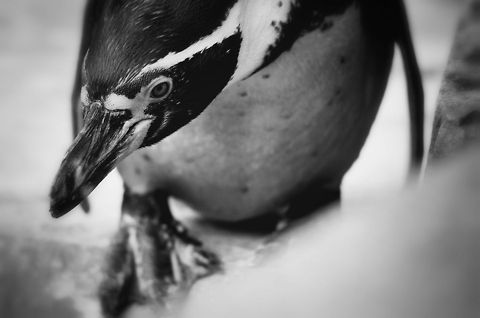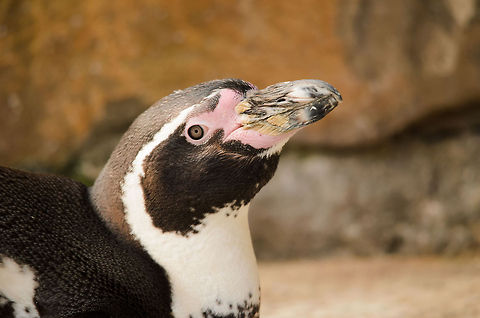
Appearance
Humboldt Penguins are medium-sized penguins, growing to 56–70 cm long and a weight of 3.6-5.9 kg. They have a black head with a white border that runs from behind the eye, around the black ear-coverts and chin, and joins at the throat.They have blackish-grey upperparts and whitish underparts, with a black breast-band that extends down the flanks to the thigh. They have a fleshy-pink base to the bill. Juveniles have dark heads and no breast-band. They have spines on their tongue which they use to hold their prey.

Status
Due to a declining population caused in part by over-fishing, climate change, and ocean acidification, the current status of the Humboldt penguin is threatened, Historically it was the victim of guano over-exploitation. Penguins are also declining in numbers due to habitat destruction. The current population is estimated at between 3,300 and 12,000. In August 2010 the Humboldt penguin of Chile and Peru, was granted protection under the U.S. Endangered Species Act.
Habitat
Humboldt Penguins nest on islands and rocky coasts, burrowing holes in guano and sometimes using scrapes or caves. In South America the Humboldt Penguin is found only along the Pacific coast, and the range of the Humboldt Penguin overlaps that of the Magellanic Penguin on the central Chilean coast. It is vagrant in Ecuador and Colombia.References:
Some text fragments are auto parsed from Wikipedia.